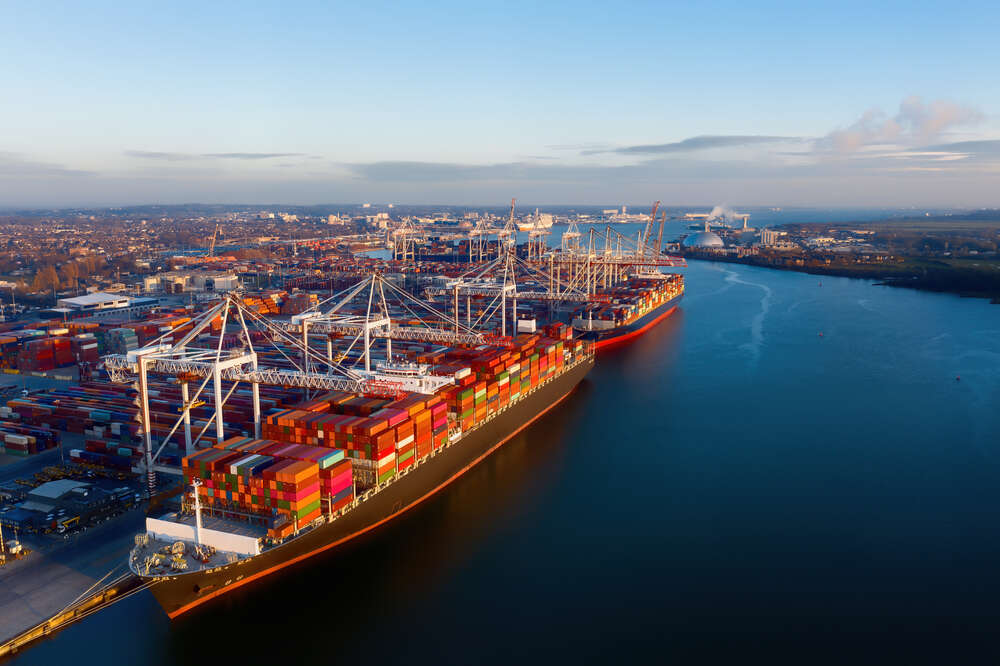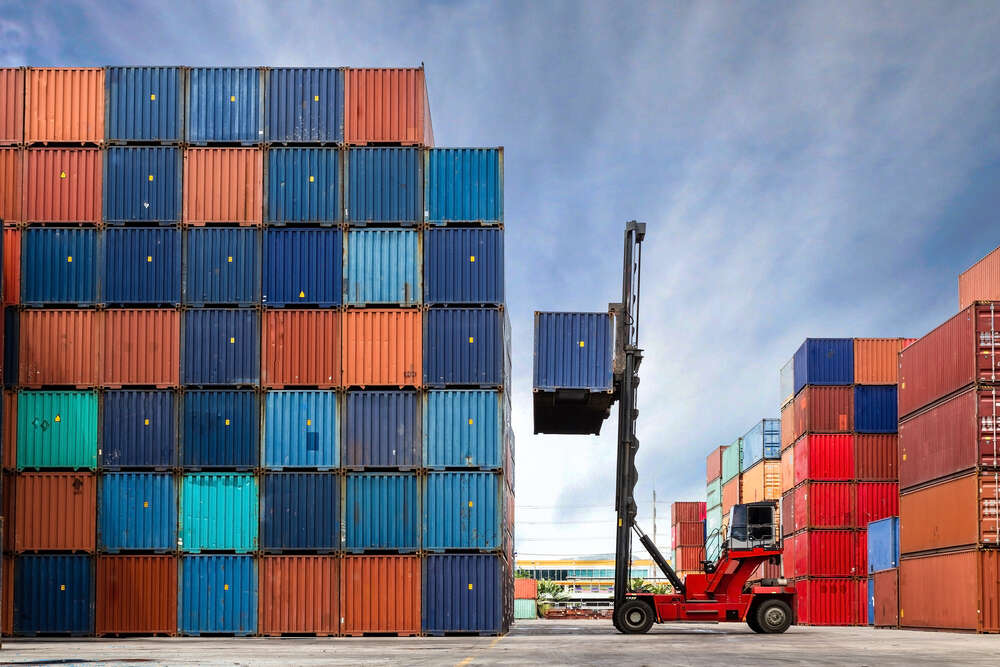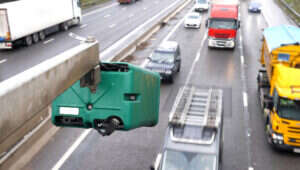
Laden with roses and carnations, the plane will land at Stansted in the next three weeks. Grown for months in vast, humming greenhouses in the dull heat of Kenya’s Rift Valley, the flowers were unearthed, dusted off, wrapped and dispatched for export to the UK earlier this month. While the process might seem plus ça change for the growers, for British and Kenyan customs officials, these bouquets are the future of trade – one of the first examples of a consignment of goods exported to the UK almost entirely using electronic documentation.
The exercise forms part of a much larger trial testing the viability of an entirely digital model for trading practices. Organised by the Institute of Exports & International Trade (IOE&IT) in collaboration with TradeMark East Africa, the Trade Logistics Information Pipeline (TLIP) initiative is one of a series of government-sponsored pilots that aim to demonstrate the feasibility of capturing all necessary data about a container for the importing nation’s customs officials before it even leaves its country of origin. If successful, this ‘Ecosystem of Trust’ could provide a blueprint for avoiding the endless form-filling that accompanies international trade – a headache that has grown increasingly painful for UK exporters since Brexit.
Nowhere is this more in evidence than in the export of foodstuffs from the UK to the EU, where Brexit has created new pressures on companies of all sizes to accede to strict regulations from Brussels on documentation. Marco Forgione recalls a recent case of a large supermarket chain seeming to move a shipping container carrying frozen pizzas. “They had over 140 different documents that were required to accompany the trader,” says the director general of the IEO&IT. “It took two customs officials eight hours each to clear and certify everything on the trailer.”
Such headaches about paperwork have contributed to a decline in UK exports to the continent of up to 14% in 2021 compared to the previous year. Unsurprisingly, this news has thrown a spotlight on the UK government’s efforts to build a post-Brexit trading framework, and harness its newfound access to international markets hitherto denied by EU membership.
Many of those plans centre on the digitisation of trade. By focusing on gathering key data about imports and exports through online forms rather than paper documents, the UK government estimates that efficiency savings of up to £225bn can be made in both the private and public sectors. That doesn’t just come from ditching clipboards, but time saved in dispersing that data to different government departments and getting the goods off docks and runways and onto shop shelves.
In the meantime, explains Forgione, the processes that underpin how we trade with the rest of the world are becoming increasingly sclerotic. Eventually, he says, they could exacerbate systemic trends which are already worsening the lives of so many people up and down the UK. Inefficiencies in getting goods from ports to market, explains Forgione, “add cost to the project at a time when we are facing record cost of living crises, increasing food inflation, and a global logistics meltdown. Anything which reduces delay – which reduces the need for oversight intervention, and speeds the transfer of documents required for the goods to move – is a positive.”

Electronic Trade Documents Bill
“We use four billion pieces of paper on an annual basis just in trade,” says Jana Psarska, policy manager for international trade at the trade association techUK. The environmental benefits of eliminating this hunger for paperwork – which, if stacked up, would create a pile 300 miles high – are clear enough. Being able to rely on electronic documents would also radically ease many of the supply chain problems witnessed since the pandemic. The sight of stevedores waiting for hours to unload shipping containers while the right documents are produced, in short, could soon be a thing of the past.
For that to happen, though, a new legal framework is required. Most nations require bills of lading and other trade documents to be issued in hard copies with a wet signature, a precedent dating back to 18th-century English laws designed to ease the collection of import taxes while preventing smuggling. The issuance of the UN’s Model Law on Electronic Transferable Records (MLETR) in 2017, however, created a blueprint for the use of electronic counterparts – a paradigm the UK government has now embraced in its Electronic Trade Documents Bill, expected to receive royal assent next year.
This legislation places electronic trade documents on the same legal footing as their paper counterparts. It’s a key milestone on the path to the full digitisation of UK trade, explains Psarska, and a game-changer for not only importers and exporters based in this country, but also those operating in places where English common law forms the basis of their trading systems. “By implementing this change, we will be far ahead of countries such as Italy and Germany,” she says.
The ETD Bill also complements the digital chapters in the free trade agreements it has struck since Brexit. While not many deals have been negotiated – only 70 have been approved, mostly ‘rollovers’ of arrangements the UK had with nations while it was a member of the EU – the deals with Japan, Australia, New Zealand and Singapore contain provisions for digital trade that pave the way, argues Psarska, for e-invoicing, e-contracts, and new forms of e-signatures. Such agreements, she adds, “pave the way for the interoperability of digital trade systems” – vital if any digital-first trading framework is to reach its full potential.
Blockchain and the Single Trade Window
Current estimates hold that the savings that could be accrued among Commonwealth nations by digitising international trade could be as high as $1.2trn. That seems altogether abstract to small business owners in the UK, explains Nick Davies, chief executive of Centre for Digital Trade and Innovation, a think tank that Davies intends to act as a bridge between the government and exporting companies. The former HMRC mandarin is well aware that grand statements about savings are probably irrelevant to your average exporter.
“What does that mean for a small to medium enterprise who just wants to get its strawberries from Kent to Lille?” he asks. “He doesn’t care about $1.2trn. What he cares about is the £30 it’s going to cost him to fill in all the bloody paperwork, which could be the difference between his transaction making a profit and not.”
That problem might soon be solved by the Single Trade Window, set to debut later next year. Whereas current practices mandate forms being filled out with the same information for up to dozens of ministries and departments, the STW platform will be designed to allow traders to input key data in one centralised repository. A key component of its Border 2025 strategy, the government has already committed some £180m to the project.
United in an overall strategy known as the Target Operating Model due to be published later this year, this system of digital checks has been welcomed by industry observers. At the moment, however, it remains largely theoretical. The ecosystem of trust being tested by the IOE&IT and other organisations is still in its proof-of-concept stage, while agreement has yet to be reached on what kind of systems will be used to underpin electronic trade documentation.
For Davies, the answer lies in a combination of systems – first and foremost, digital distributed ledgers. “I don’t use the word ‘blockchain’ anymore,” he says, wary of explaining that the use of the technology wouldn’t involve cryptocurrencies or publicising the movement of every shipping container around the planet. What blockchain technology does afford, he argues, is the ability to create a digital asset that cannot be duplicated – the same reason physical documentation with wet signatures has been prized as a bastion against smuggling for centuries.
“If you can tokenize something so that this piece of code is unique, and demonstrates my ownership of something, then you’re away,” says Davies. “That’s the game-changer.”
That must be matched with tracking systems that allow traders to know instantly where and how their goods are being conveyed – essential if full transparency and efficiency is to be obtained across international supply chains. “It only takes one boat to get stuck in the Suez Canal and the whole thing goes to pot,” says Davies.
Some logistics companies have already begun rolling out IoT-based tracking systems along their supply chains. But the majority still blanch at sharing their data with customs authorities and other companies further down the supply chain, Davies says. “Signs are that it’s changing, but we’ve still got to persuade those, what I call, ‘hairy-arsed’ CFOs and CEOs that they can actually [share] all the little bits of data in the interests not just of themselves, but of industry more generally and, indeed, their own customer base,” he says.

How businesses will transition to digital trade
These measures form what is a bold strategy from the UK government that aims to modernise British trading practices – one bound to an equally ambitious target of £1trn worth of exports in goods and services by the mid-2030s. “It’s a big commitment,” says Psarska, one that can only be reached “by bringing in more SMEs into global supply chains and getting more SMEs to export.”
So far, however, only a minority of businesses actually seem aware that the UK is digitising its trading practices. In a survey taken during a webinar organised in August by the IOE&IT about the reforms, only a quarter of respondents said that they had a strong or fair understanding of what the STW or Ecosystem of Trust actually was – up from just 13% after a similar briefing in July.
Forgione concedes that there’s still work to be done in educating large companies and SMEs about how they should prepare for the transition to a digitised trading world. With recent statistics showing a decline in UK exports, time is running out. “If we are going to address the significant issues that exist for the UK economy – if we’re going to tackle rising food inflation, if we’re going to try and prevent a long and deep recession – the only way we’re going to achieve that is by UK businesses trading more and trading more internationally,” says Forgione.
The government is moving quickly to pass key legislation - too quickly for some critics, notably the Public Accounts Committee, which recently assessed the government’s Border 2025 strategy as “optimistic, given where things stand today”. Earlier this week, meanwhile, the Institute of Chartered Accountants in England and Wales cautioned against launching the STW before the system could be properly tested.
Forgione says further announcements about the Single Trade Window are due within the next month or so, while the deadlines for the Target Operating Model and the government’s border strategy are set for three and four years’ time respectively. “It’s not a lot of time to bring all of this forward,” he admits.
Nevertheless, the push to modernise British trade might have found its moment. With the current Conservative government signalling its intent to aggressively pursue deregulation as a way of pulling the UK economy out of its current inflationary crisis, investing in digital solutions to allow businesses to export goods more quickly seems like an easy win. Both Forgione and Davies also see Prime Minister Liz Truss, who previously headed up both the Foreign Office and the Department for International Trade, as a potential ally
Ultimately, though, the focus must be on making it straightforward for British businesses to adapt to this new digital exporting reality. “We’ve got to make it easy for them, because if we don’t, we really are going to hell in a handcart,” says Davies. While the advantages of digitising trade for transparency and sustainability in supply chains are clear, any new system must be relevant to the daily, sometimes mundane concerns of the average SME. “Those trillions and billions don’t cut much ice,” adds Davies. “What really cuts ice if I can save £20 on a customs declaration.”






